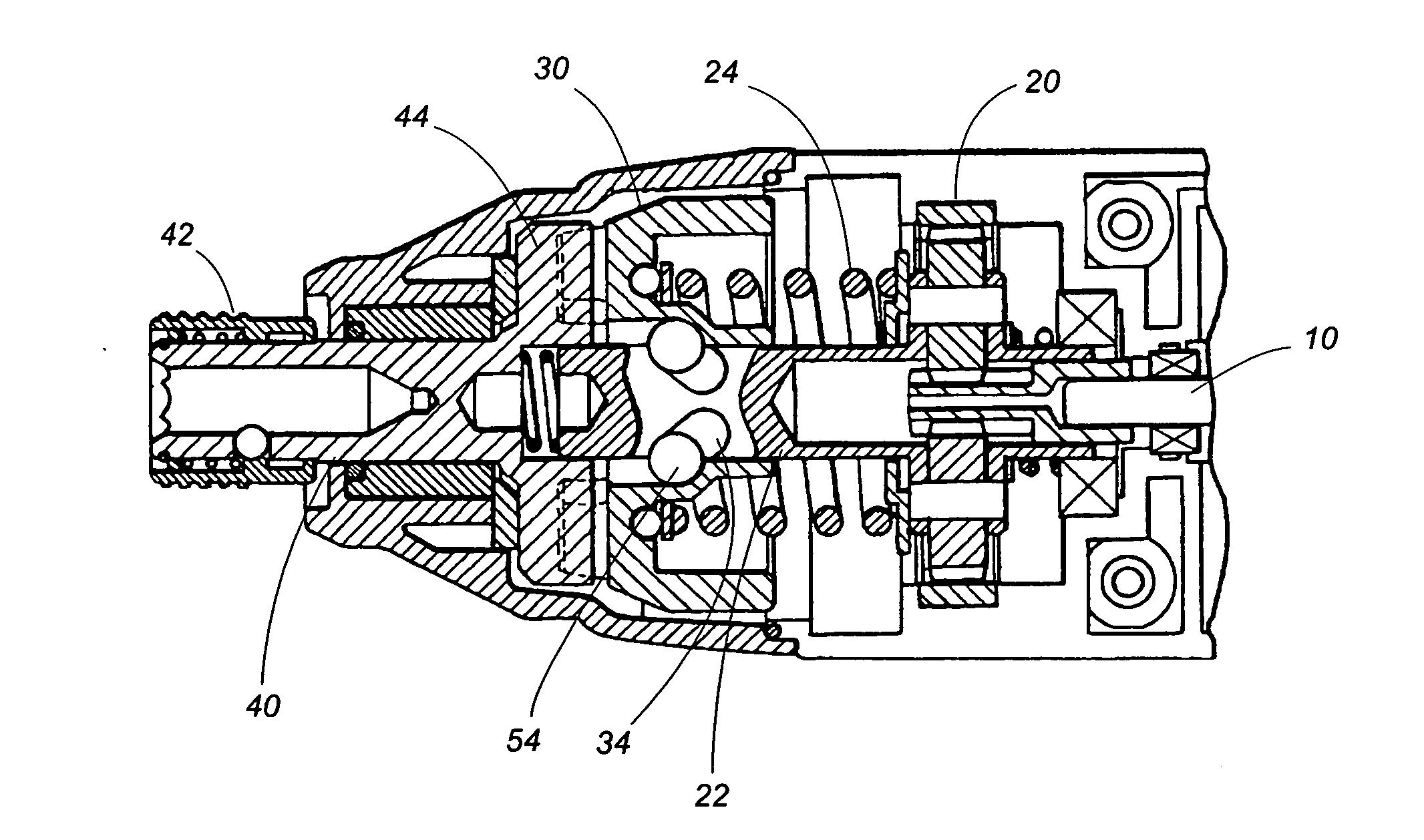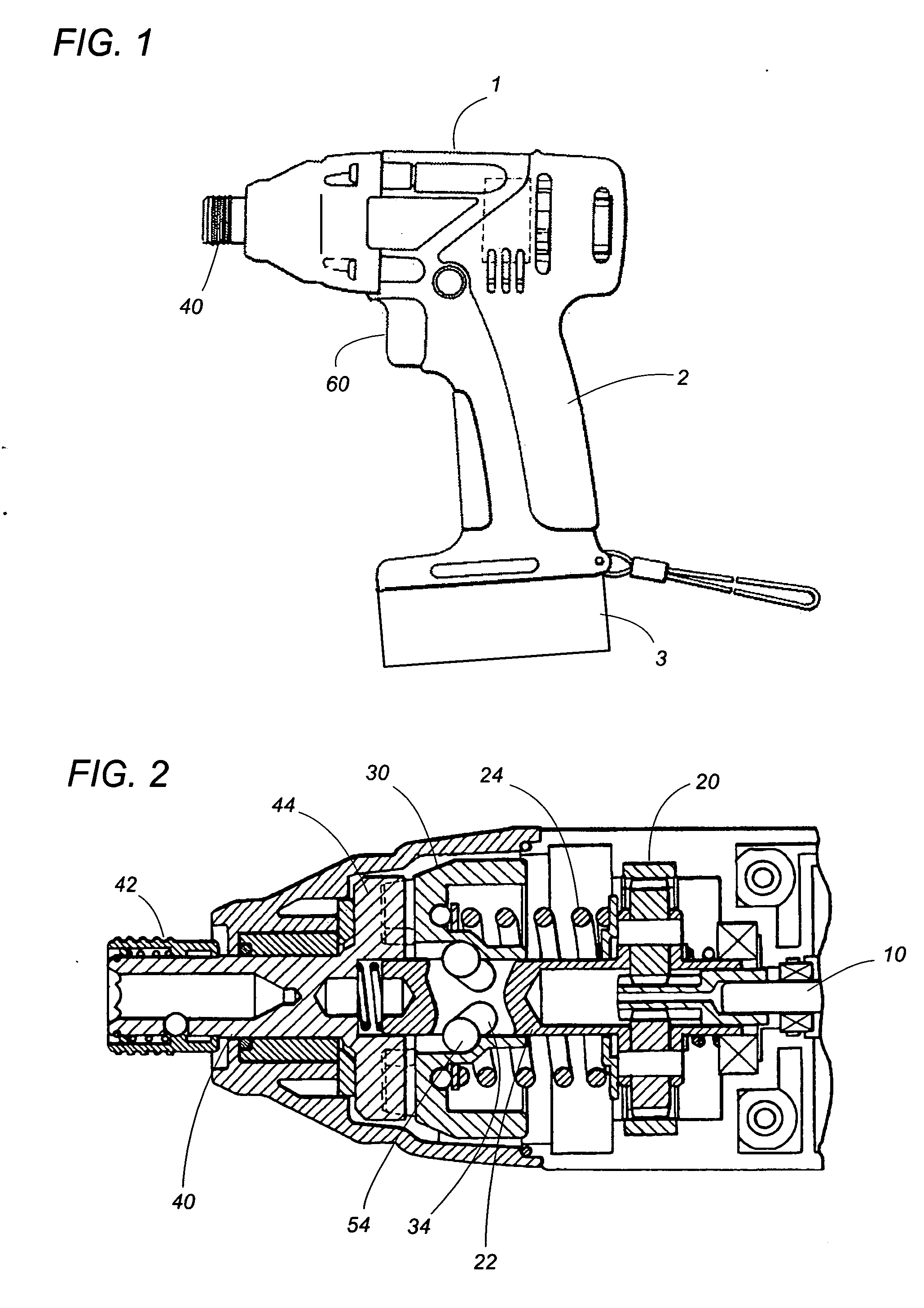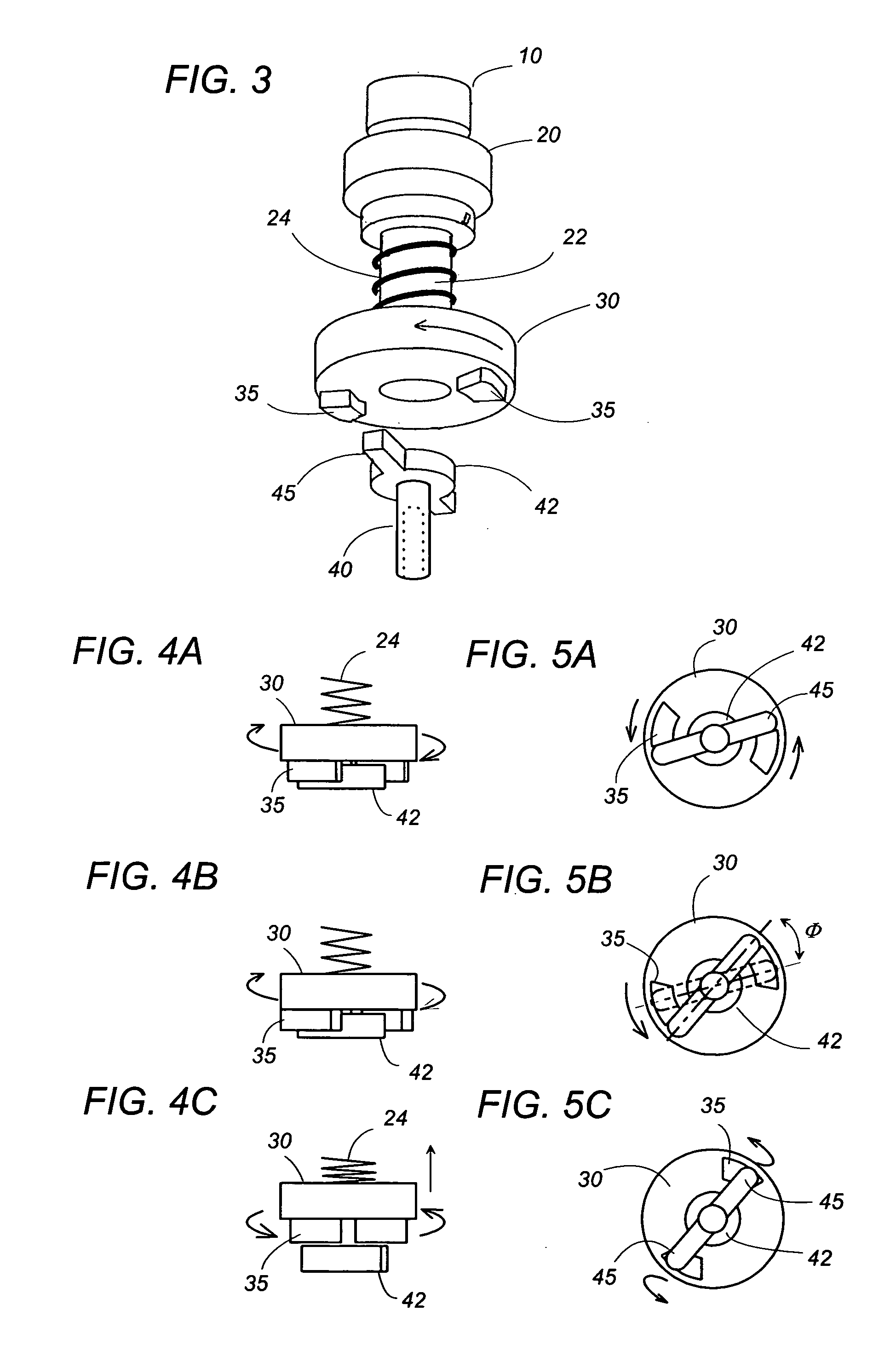Rotary impact power tool
a power tool and rotary technology, applied in the direction of power driven tools, wrenches, screwdrivers, etc., can solve the problems of irregular and inconsistent impact on the tool bi
- Summary
- Abstract
- Description
- Claims
- Application Information
AI Technical Summary
Benefits of technology
Problems solved by technology
Method used
Image
Examples
Embodiment Construction
[0024] Referring now to FIGS. 1 to 3, there is shown a rotary impact power tool in accordance with a preferred embodiment of the present invention. The power tool has a casing with a main body 1 and a hand grip 2. The main body 1 accommodates therein an impact drive unit 100 composed of a brushless three-phase motor 10, a reduction gear 20 with a drive shaft 22, and an output shaft 40 adapted to hold a tool bit (not shown) such as a screwdriver, drill, or wrench bit. The output shaft 40 is held rotatable within the front end of the main body 1 and carries at its front end a chuck 42 for mounting the tool bit. The motor 10 has a rotor carrying permanent magnets and a stator composed of three-phase windings. The rotor is connected to the reduction gear 20 to rotate the drive shaft 22 at a reduced speed. A battery pack 3 is detachably connected to the lower end of the hand grip 2 to supply an electric power to the motor 10.
[0025] A hammer 30 is coupled at the front end of the drive sh...
PUM
 Login to View More
Login to View More Abstract
Description
Claims
Application Information
 Login to View More
Login to View More - R&D
- Intellectual Property
- Life Sciences
- Materials
- Tech Scout
- Unparalleled Data Quality
- Higher Quality Content
- 60% Fewer Hallucinations
Browse by: Latest US Patents, China's latest patents, Technical Efficacy Thesaurus, Application Domain, Technology Topic, Popular Technical Reports.
© 2025 PatSnap. All rights reserved.Legal|Privacy policy|Modern Slavery Act Transparency Statement|Sitemap|About US| Contact US: help@patsnap.com



